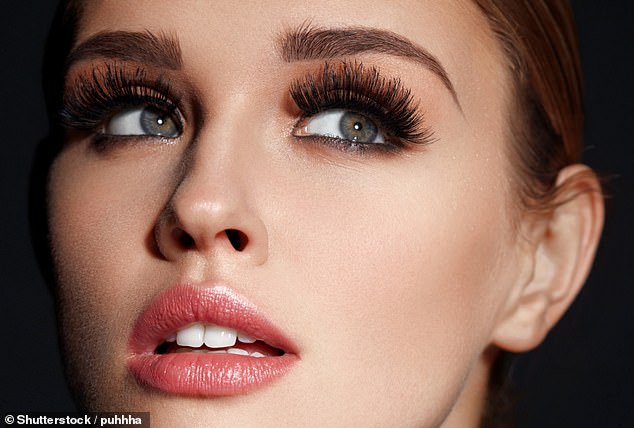Scientists reveal the formula for the perfect EYELASHES – and it’s bad news if you’re a fan of falsies
>
From Jessica Rabbit to Daisy Duck, many female cartoon characters have long eyelashes that they flaunt to tempt suitors.
But a new study suggests that if you want to look your best, it’s time to ditch the long faux pas.
Researchers from the University of Plymouth say that the length of the eyelashes, which is equal to a third of the width of the eye, is the most attractive.
“With longer eyelashes, faces are perceived as more attractive,” the team wrote in their study.
“But only to a point, as the perceived attractiveness of faces begins to decrease as eyelash length increases.”

A new study suggests that if you want to look your best, it’s time to ditch the long faux pas (stock image)
In 2015Researchers from the Georgia Institute of Technology studied the eyelash lengths of different mammals and found that 22 species have eyelashes that are about a third the width of their eyes.
This included humans, snow leopards, camels and giant pandas.
A follow-up study using a wind tunnel revealed that this length is optimal for diverting air, maintaining eye moisture, and preventing dust from reaching our eyes.
However, until now, little research has looked into how the length of our eyelashes affects how attractive we are.
To answer this question, the researchers enrolled 319 participants who were Asian, black, or white.
These participants were shown four pictures of faces representing women from four racial backgrounds—Asian, Black, Indian, and White.
The women in the photos either had no eyelashes, had eyelashes that were about a third the width of their eyes, or had eyelashes that were about half the width of their eyes.
Participants were asked to rate how attractive they found each woman to be.
Overall, the results showed that faces whose eyelashes were a third of the width of their eyes were rated as the most attractive.
However, results varied based on participants’ races and faces.

The women in the photos either had no eyelashes, had eyelashes that were about a third the width of their eyes, or had eyelashes that were about half the width of their eyes. Participants were asked to rate how attractive they found each woman to be
For example, Asian participants preferred faces with 20% eyelash length, while black and white participants preferred Asian faces with 40% eye width.
Additionally, white participants found black faces with 45% longer eyelashes to be the most attractive.
“The current study revealed that regardless of the gender or race of the observer, the effect of eyelash length on the perceived attractiveness of a woman’s face follows an inverted U function, with attractiveness rising and then falling as eyelash length increases.” They wrote in their study, published in Scientific reports.
“It is particularly important to note this pattern in depictions of faces of different races (and eye color).”
This study comes shortly after researchers concluded that model Gigi Hadid may have a perfect jawline.
The 28-year-old model, who has a child with former One Direction singer Zayn Malik and has been linked to actor Leonardo DiCaprio, has a jaw angle of 141.9 degrees which can be seen from the front of her face.
This is close to the “ideal” angle of 142 degrees, according to the researchers.
When the model’s face was shown to 32 expert facial surgeons and 16 laypeople, they unanimously agreed that her jawline was neither too steep nor too flat.
Meanwhile, older model Kate Moss was found to have a beautiful front jaw angle, which 76 percent of experts and non-experts rated as attractive.
(Tags for translation)dailymail
